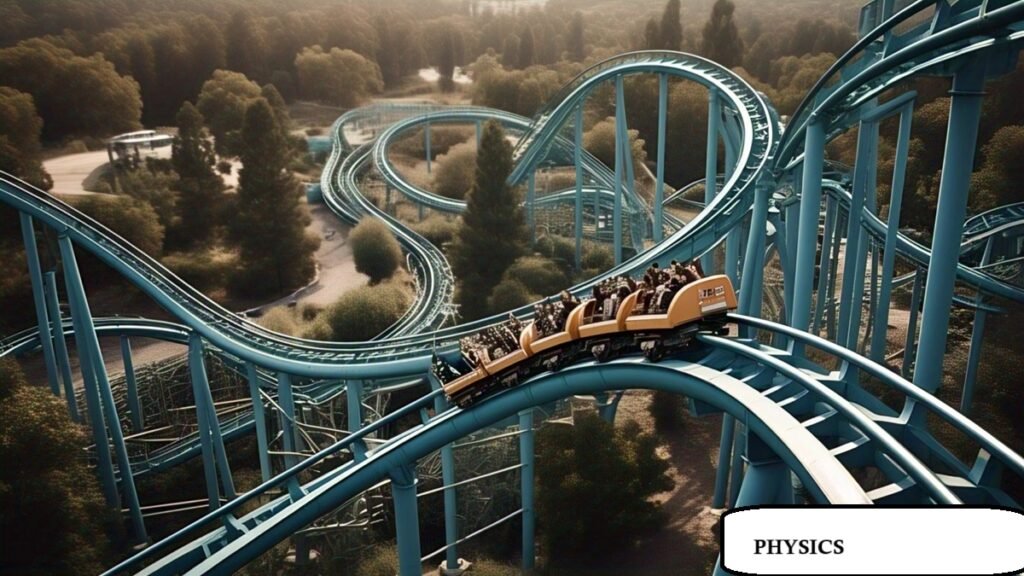Introduction
Roller coasters are the ultimate adrenaline rush—but they’re also masterpieces of physics in action. From the stomach-dropping first drop to the loops that defy gravity, every twist and turn is governed by fundamental principles of energy, forces, and circular motion.
In this blog, we’ll break down the science behind roller coasters, explaining how they work—and why you don’t fall out when upside down!
1. The Energy Behind the Ride
Roller coasters rely on the conversion of energy to keep the ride thrilling yet safe.
Potential Energy → Kinetic Energy
- At the top of the first hill, the coaster has maximum potential energy (PE = mgh).
- As it descends, PE converts to kinetic energy (KE = ½mv²), speeding up the train.
- Designers ensure that friction and air resistance don’t steal too much energy, or the ride would stall!
Fun Fact: The world’s tallest coaster, Kingda Ka, drops 456 feet, reaching 128 mph in just 3.5 seconds!
2. Forces at Play: G-Forces and Newton’s Laws
Newton’s First Law (Inertia)
- Your body wants to stay in place—so when the coaster accelerates, you feel pushed back into your seat.
- Sudden drops make you feel weightless because you’re in free fall!
G-Forces: The Thrill and the Danger
- Positive G-forces (pushing you into your seat) happen during climbs and loops.
- Negative G-forces (floating out of your seat) occur on sharp drops.
- Too many Gs can be dangerous—most coasters stay under 4-5 Gs for safety.
Did You Know? Fighter pilots experience up to 9 Gs, while some extreme coasters briefly hit 6 Gs!
3. Circular Motion: Why Don’t You Fall Out Upside Down?
The Physics of Loops
- When a coaster enters a loop, centripetal force (provided by the track) keeps it moving in a circle.
- At the top of the loop, inertia and speed keep riders pressed into their seats—you don’t fall out because you’re moving fast enough!
The Clothoid Loop Trick
- Early circular loops caused whiplash (too many Gs at the bottom).
- Modern teardrop-shaped (clothoid) loops reduce G-forces by making the curve tighter at the top.
Pro Tip: Next time you ride a loop, notice how you feel heaviest at the bottom and lightest at the top!
4. Braking and Safety: How Do Coasters Stop Safely?
- Friction brakes (like on a bike) slow the train gradually.
- Magnetic brakes (used in modern coasters) provide smooth, powerful stops without physical contact.
- Block systems ensure only one train is on a section of track at a time—preventing collisions!
Conclusion: Engineering Meets Physics for Maximum Thrills
Roller coasters are carefully calculated machines, balancing speed, forces, and energy to deliver excitement without danger. Next time you ride one, think about the physics making it all possible!
What’s your favorite roller coaster? Let us know in the comments! 🎢⚡
Want more? Try this experiment:
👉 Build a mini coaster out of foam tubes and marbles—test how hill height affects speed!

